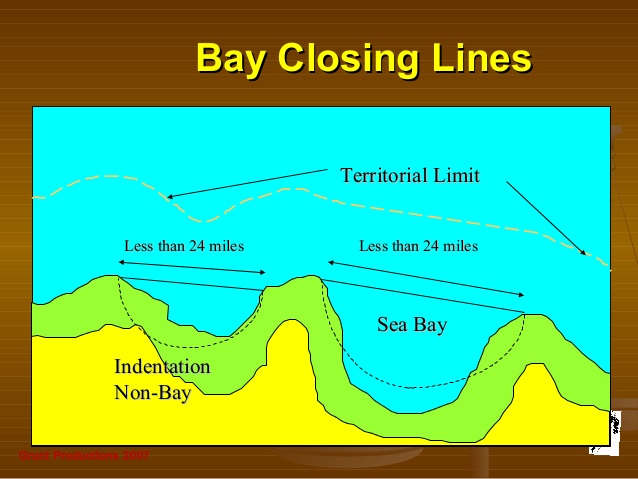“Closing line” is a dividing line between the internal waters and the territorial seas of a coastal State enclosing a river mouth, a bay or a harbor; or a dividing line for the archipelagic waters of an archipelagic State as stated in UNCLOS Articles 9–11 and 50.
Comment
In LOAC-governed situations under the “other rules of international law” clauses in UNCLOS, a different definition may apply. The same may be the situation if the UN Charter supersedes UNCLOS or if jus cogens norms apply.
Consolidated Glossary ¶ 16 defines “closing line,” citing UNCLOS Articles 9–11 and 50, as a “dividing line between the internal waters and the territorial seas of a coastal State enclosing a river mouth …, a bay … or a harbor …; of the archipelagic waters of an archipelagic State. …” Former Glossary ¶ 16 defined “closing line” as “[a] line that divides the internal waters and territorial seas of a coastal State or the archipelagic waters of an archipelagic State. It is most often used in the context of establishing the baseline at the entrance to rivers …, bays …,
and harbors. …”
UNCLOS Article 9, and its counterpart in Territorial Sea Convention Article 14, refer to a “straight line across the mouth of the river …” where it enters the sea. UNCLOS Article 10(4), and its counterpart in Territorial Sea Convention Article 7(4), refer to a “closing line” across the entrance to a bay more than 24 miles across. UNCLOS Article 11, and its counterpart in Territorial Sea Article 8, establishing rules for ports, do not mention lines of any kind. UNCLOS Article 50 allows an archipelagic State to draw “closing lines” to delimit its internal waters in accordance with UNCLOS Articles 9–11. Other UNCLOS and Territorial Sea Convention provisions refer to “baselines” or “lines” for the territorial sea, contiguous zone, EEZ, continental shelf, archipelagic States or the Area. The phrase “closing line” is not used in those provisions.

